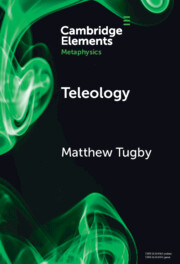Element contents
Teleology
Published online by Cambridge University Press: 31 August 2024
Summary
- Type
- Element
- Information
- Series: Elements in MetaphysicsOnline ISBN: 9781009257404Publisher: Cambridge University PressPrint publication: 27 June 2024

